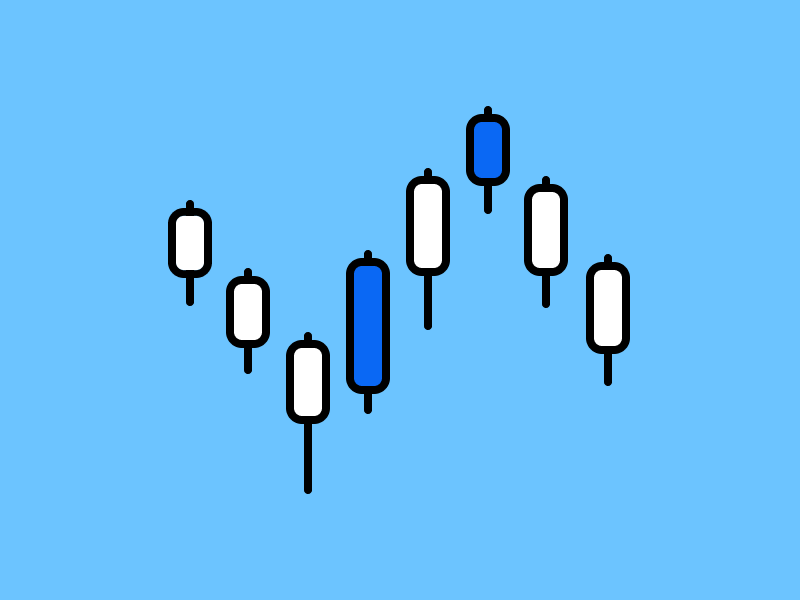Market Analysis Apr 3, 2023: Inflation Continues to Fall, BTC Prepares to Enter a New Macro Uptrend

United States inflation continues to decline and many started to believe the Fed’s policy of raising interest rates may be nearing its end. The flattening of US Treasury yields is a positive catalyst for the crypto market. Bitcoin is now preparing to enter a new macro uptrend. Find out the full explanation by reading the following market analysis.
The Pintu trader team has collected various data that analyze macroeconomics and the crypto market movement in the past week. However, kindly pay attention that all information in this market analysis is for education purposes only, not financial advice.
Market Analysis Summary
- 📉 US Inflation decreased. As reflected by the PCE Price Index, the rate decreased from 5.3% in January to 5% in February. The Core PCE Price Index also declined from 4.7% to 4.6%.
- 🎲 There is a 45% probability of the Fed either keeping the rates steady and 55% raising them by 0.25 percentage points.
- 🚨 The Fed’s campaign to raise interest rates may be nearing its end. The potential occurrence of a U.S. recession is likely to be the primary determining factor for interest rates in 2023
- 📊 BTC is in the beginning of a new macro uptrend. However, BTC might be overheated short term, with resistance at 0.236 Fibonacci line. Expect a short-term healthy pullback for BTC to find its price support.
Macroeconomic Analysis
According to the US Bureau of Economic Analysis, the yearly measurement of inflation in the US, as determined by the Personal Consumption Expenditures (PCE) Price Index, decreased from 5.3% in January to 5% in February, falling short of market expectations of 5.3%.
Meanwhile, the annual Core PCE Price Index, which is the preferred inflation gauge of the Fed, also declined slightly from 4.7% to 4.6% during the same period, below the anticipated 4.7% forecast by analysts. Both PCE inflation and Core PCE inflation increased by 0.3% on a monthly basis. Additionally, Personal Income rose by 0.3% monthly in February, and Personal Spending increased by 0.2%, as per the publication’s further details.
A slowdown in inflation would be considered a positive sign, implying that the Fed’s efforts to tighten monetary policy in the previous year are having some effect.

US equity futures rose upon news of lower consumer sentiment and a significant gauge of US inflation decreased more than anticipated last month. We see consumer spending stabilized as well. Despite banking turmoil and higher interest rates, investor optimism was evident in the global shares index, which was on track to achieve a second consecutive quarterly gain. This indicates that the Fed’s campaign to raise interest rates may be nearing its end. Additionally, the dollar’s gains were reduced.

Bank of America strategists report that investors are rapidly increasing their holdings of cash, with a level of activity not seen since the pandemic outbreak, as they seek out better interest rates in money-market funds despite the bank runs. EPFR Global data cited by the strategists revealed that investors have directed $508 billion into cash funds during the first quarter of this year, marking the largest quarterly inflow since the early stages of Covid. In the last two weeks, more than $100 billion has been channeled into money-market funds.

According to a chart, the S&P 500 recorded an average gain of 1.4% in April from 1928 to 2022, making it the second-best month for the stock market. July is the only month with a higher average gain of 1.7%.

On March 12, the Fed and the FDIC took action to control the banking crisis after the Financials stock price index dropped by 14.1% between March 6 and March 17. Since then, the index has recovered by 3.2%. The overall market has been performing better than expected despite the banking crisis, thanks to the growing confidence that the worst may be over, and that the Fed and FDIC will continue to stabilize the situation if necessary.
Treasury yields stabilized after a quarter of volatile fluctuations. Investors have been grappling with the challenges posed by banking failures and the changing prospects for interest rates in the face of elevated inflation and potential threats to economic expansion. The drop in the 10-year US Treasury yield from 4.06% on March 2 to 3.55% recently has supported overall equities and the crypto market

According to the US Department of Labor’s weekly data published on Thursday, there were 198,000 initial jobless claims in the week ending March 25. This figure was higher than the market’s expectation of 196,000 and represented a slight increase from the previous week’s print of 191,000.
In addition, the report revealed that the advance seasonally adjusted insured unemployment rate was 1.2%, while the 4-week moving average stood at 198,250, reflecting an increase of 2,000 from the previous week’s average that was not revised.
The report also states that the number of seasonally adjusted insured unemployment claims rose by 4,000 to 1,689,000 during the week ending March 18, compared to the revised level of the previous week.

On May 3rd, the Fed will convene to determine the short-term interest rates. According to Wall Street, there is a 45% probability of the Fed either keeping the rates steady or 55% of raising them by 0.25 percentage points. Although the Fed is unlikely to dispute this evaluation, its leaders are deferring their decision until they can evaluate the new data.

The potential occurrence of a U.S. recession is likely to be the primary determining factor for interest rates in 2023. Various indicators suggest that a recession may be imminent, such as the inverted yield curve, which has historically predicted recessions with a degree of accuracy. Additionally, the softening of house prices, particularly as the housing sector is a critical driver of the economy, further supports this hypothesis.
Nevertheless, the unemployment rate remains at a remarkably low level, indicating that a recession has yet to occur. Although the unemployment rate has risen slightly in February, to 3.6%, due to corporate layoffs primarily in the technology sector, many other sectors, particularly leisure, and hospitality, continue to generate employment opportunities.
If a recession does occur, it may contribute to a reduction in inflation, enabling the Fed to reduce interest rates. Nonetheless, the Fed emphasizes that its objective is to reduce inflation and that it currently does not perceive any economic weakness.
Bitcoin Price Analysis
Looking at the monthly candle, we are closing above the macro downtrend line. This will confirm the breakout and the beginning of a new macro uptrend. Historically, this has been a good indicator of BTC getting out of the bear market. This doesn’t mean that it’s upward from here on, we might try to find support at 20,000, but nevertheless, we should be heading on a new macro uptrend longer term.

On the weekly candle however, BTC is looking overheated after its amazing run 2 weeks ago. This is shown by the bollinger band analysis below. We need to find a good entry point to ride the upward momentum and current price is definitely not ideal for entry.

Another resistance to take note of is the 0.236 Fibonacci retracement line of the weekly chart. This is the 3rd week we are trying to break out of the resistance line. Generally, a monthly Close below the resistance line could set the price up for a rejection, and if the rejection is strong enough, then BTC could see a 2015-like retest of the Macro Downtrend. It’s vital to see how BTC reacts to the resistance line.
On-Chain Analysis
📊 Exchange Reserve: As the exchange reserve continues to fall, it indicates lower selling pressure. Net deposits on exchanges are high compared to the 7-day average. Higher deposits can be interpreted as higher selling pressure.
💻 Miner: Miners’ are selling holdings in a moderate range compared to their one-year average. Miner’s revenue is in a moderate range, compared to its one-year average.
🔗 On-chain: More investors are selling at a loss. In the middle of a bear market, it can indicate a market bottom. Long-term holders’ movement in the last 7 days was lower than the average. They have the motive to hold their coins. Investors are in an anxiety phase where they are currently in a state of moderate unrealized profits.
🏦 Derivatives: Long-position traders are dominant and are willing to pay short traders. Buying sentiment is dominant in the derivatives market. More buy orders are filled by takers. As open interest increases, it indicates more liquidity, volatility, and attention are coming into the derivative market. The increasing trend in OI could support the current ongoing price trend.
🔀 Technicals: RSI indicates a neutral condition. Stochastic indicates a neutral condition where the current price is in a moderate location between the highest-lowest range of the last 2 weeks.
Altcoin News
- ⚡ Aave To Launch on Polygon zkEVM. A preliminary poll pitching the deployment on Polygon ZkEVM passed on Wednesday with near-unanimous support. The proposal will now move to a formal on-chain vote. If passed, the deployment could offer significant benefits for both projects. Aave v3 could drive significant value onto Polygon’s fresh-faced zkEVM network, while potentially giving Aave a competitive edge over rival lending protocols seeking to deploy on the network. Aave also plans to launch on ZkSync Era, further expanding its presence across Ethereum’s growing Layer 2 ecosystem.
- 🌟 Polygon’s Zero-Knowledge Rollup Goes Live On Mainnet. On March 27, Polygon announced the launch of its zkEVM mainnet test version. However, on March 28th, according to data from Dune Analytics, since the launch of Polygon zkEVM nearly 24 hours, over 2,500 users have completed more than 2,700 cross-chain transactions worth $880,000. Due to the lack of expected airdrop incentives, compared to the launch day of the zkSync Era, the performance of Polygon zkEVM is slightly underwhelming.
- 📅 Ethereum Shapella network upgrade activation date. The Ethereum Foundation said The Shapella network upgrade will activate on the Ethereum network at epoch 194048, scheduled for 22:27:35 UTC on Apr. 12, 2023. Also, the testing of the Shapella upgrade is entering its final stages, with a last mainnet shadow fork scheduled this week and cross-client EVM fuzzing of the latest releases.
More News from Crypto World in the Last Week
- 💸 DAO treasuries top $25 billion for the first time. According to figures from the DAO Deep, on March 31, total assets for all DAO reached a record $25.1 billion. Remarkably, assets in DAO treasuries have more than doubled since the beginning of 2023. Furthermore, the figure of $25.1 billion represents around 40% of the total value locked for all of DeFi, as reported by DeFiLlama. The Optimism Collective is the leader in terms of treasury funds, with $5.5 billion giving it a market share of 22%. Arbitrum has a slightly lower DAO treasury of $4.4 billion giving it a share of 17.5%. The remaining DAOs comprising the top five are BitDAO, Uniswap and Polygon, with treasuries of $2.6 billion, $2.5 billion, and $1.5 billion respectively.
- 🖼️ Amazon NFT Marketplace Could Feature Beeple, Pudgy Penguins. Amazon is putting the finishing touches to its in-house NFT initiative, according to sources directly familiar with the matter. And at least one document suggests that Amazon is set to feature digital collectibles from top crypto-native creators including Beeple and Pudgy Penguins. The Amazon NFT marketplace will run on a private and permissioned blockchain controlled by the e-commerce giant.
Cryptocurrencies Market Price Over the Past Week

Cryptocurrencies With the Best Performance
- Injective Protocol (INJ) +21,41%
- Stellar +14,64%
- Hedera Hashgraph +13,81%
- Ripple +11,01%
Cryptocurrencies With the Worst Performance
- OMG Network -19,43%
- IExec RLC (RLC) -11,18%
- Perpetual Protocol -11,14%
- Neo (NEO) -8,78%
Reference
- Martin Young, DAO treasuries top $25 billion for the first time: DeepDAO, Coin Telegraph, accessed on 3 April 2023.
- Samuel Haig, Aave To Launch on Polygon zkEVM, The Defiant, accessed on 3 April 2023.
- Aleksandar Gilbert, Polygon’s Zero-Knowledge Rollup Goes Live On Mainnet, The Defiant, accessed on 3 April 2023.
- Michael Bodley, Amazon NFT Marketplace Could Feature Beeple, Pudgy Penguins, Blockworks, accessed on 3 April 2023.
- Ethereum Blog, Mainnet Shapella Announcement, accessed on 3 April 2023.
Share
Related Article
See Assets in This Article
PERP Price (24 Hours)
Market Capitalization
-
Global Volume (24 Hours)
-
Circulating Supply
-


